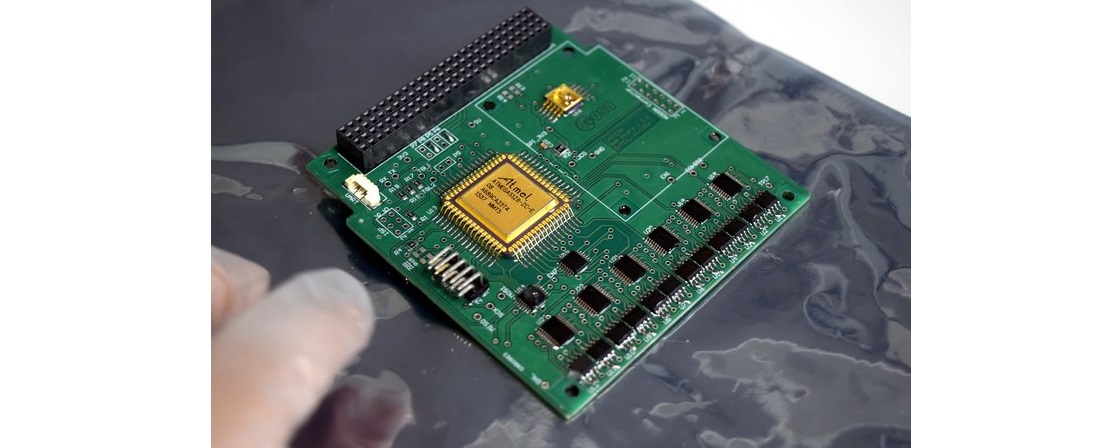
The Chimera electronics board. Image credit: ESA
ESA’s next mission, the miniature GomX-4B, includes a piggyback experiment to test how well everyday commercial computer memories perform in the radiation-soaked environment of space.
Ready to be launched from China this Friday, GomX-4B was built from six standard 10 cm CubeSat units by GomSpace in Denmark.
Its main goal is to test radio links between satellites and micropropulsion, but GomX-4B also carryies a small, cheap but important secondary experiment: a single 10x10cm electronics board with 12 computer flash memories, made up of three examples of four different types, each purchased for a few euros.
Known as Chimera, this experiment will test how such ‘commercial-off-the-shelf’ parts cope with bombardments of high-energy electrically charged atomic particles from the Sun and deep space. A specially space-qualified monitoring chip will record the performance of the dozen memories.
“Interaction with charged particles can induce ‘bit flips’ in computer memory, introducing errors,” explained Chimera team member Tomasz Szewczyk.
“We perform ground testing and software modelling to understand how different components are affected by radiation, but nothing beats real testing in space.
“There’s an increasing push to use more off-the-shelf parts in orbit because they are theoretically cheaper and more capable than space-designed parts, but there are question marks over their reliability. For instance, different batches of the same part may have radically different reactions to charged particles, based on small variations in the raw materials or the manufacturing process. That’s why we are flying three versions of each memory.”
Once it became clear there was a chance to fly on GomX-4B, Chimera was built and tested in a year, with ESA’s data engineers working together with quality assurance experts. The board was assembled by certified ESA engineers, with environmental testing for launch and space conditions using shaker tables and thermal–vacuum chambers.
“ESA missions have already been using a lot of different off-the-shelf parts, certainly across the last two decades,” said computer scientist Gianluca Furano. “All the mass memory of currently flying missions is made up of purely commercial flash devices, for instance.
“And right now there are some component areas where we simply don’t have any space-qualified alternative. The problem is that off-the-shelf parts need to undergo a lot of testing in order to be sure they’ll meet the necessary performance and reliability, and this can mean their per-unit cost actually ends up much higher.”
Filed Under: Aerospace + defense




